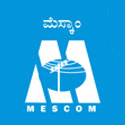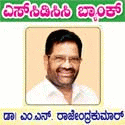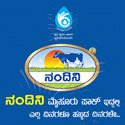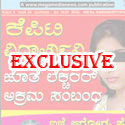‘District administration to submit caste census report by October 30’
12:08 PM, Sunday, October 18th, 2015 Mangaluru : State Backward Classes Commission chairperson H Kantharaj has said that all district administration would submit a report on socio-economic and caste census by October 30.
Mangaluru : State Backward Classes Commission chairperson H Kantharaj has said that all district administration would submit a report on socio-economic and caste census by October 30.
According to the new census, interestingly, the population of Dakshina Kannada district has fallen by around 29,000, since 2011.
Addressing mediapersons on Saturday, Kantharaj said that the population of the district in 2011 was 20,89,649 but now is recorded to be 20,60,051.
“Migration would be the main reason for the decrease in population. There are around 4,890 non-resident houses in the district. The number of households, however, has increased by 13,450 in these years. The Commission will submit the final report to the government within two months,” he added.
The State Backward Classes Commission had, earlier, carried out an open hearing at the deputy commissioner’s court room. The members of Dakshina Kannada Backward Castes’ Association, an organisation of 30 castes, submitted a 16-point demand to the Commission, strongly opposing the ‘Made Snana’ and defining it as an anti-Constitutional practice as well as against equality. The members said that the practice denied social justice and demanded that the government implement a law against superstitions.
They also demanded an extension in the backlog system for backward classes as there was for SCs and STs. “The government should give interest-free loans to backward class students. Offline facilities should also be provided to students to apply for scholarship,” the members demanded, but opposed an addition of new castes to the backward castes category.
The members of the Karnataka Aadi Dravida Mahamandali said that, in the recent socio-economic and caste census, there had been two separate castes like ‘Mansa’ and ‘Manser’. “They are not castes at all. ‘Manser’ is merely the plural of the word ‘Mansa’,” they insisted.
The ‘24 Mane Telugushetty’ members requested a solution to the problems they had in getting income certificates and other facilities, “in spite of being in the reservation list.”
The Sthanik Brahmins wanted their caste to be added to the category 2A.
Kantharaj said that the Commission would decide on the demands after consulting experts and checking legal parameters and the outcome of the survey. He said that the reservation was not implemented properly and this was evident through several incidents of dalit atrocity.
While asked about the uniform civil code, the chairperson said the Parliament would decide on the issue.
Commission members Prof Gurulingaiah, Sharanappa Manegar, Dharmaraj, K N Lingappa, G D Gopal and District Social Welfare Officer Santhosh Kumar were present.
Kantharaj, who spoke to mediapersons after chairing the open forum to discuss the grievances on caste names, inclusions and exclusions as well as reservation criteria, said that the population of Udupi district, as per the 2011 census, was 11,77,361 while in 2015 it was 12,53,851. The additional 76,409 persons accounted for 6.5 per cent of the population increase in the district, he explained.
During the interaction, a request was made for the inclusion of the term Konkani Kharvi in addition to Kharvi / Konkani Kharvi. The other appeal was for an inclusion of Soma Kshatriya caste under Category 2A. The Commission also received a written appeal from the Sthanika Brahmins for an inclusion under the same category. The Vaishyavani community demanded reservation and inclusion under category 3B. Devadigas appealed for an inclusion under Category 1 instead of the present Category 2A. The Pangadagara community demanded for an inclusion of the community into Category 1 along with Pangadagara Nayaka. The Pariyala community people demanded that they should be considered under Category 1.
Meanwhile, the Shettigar community demanded inclusion of the term ‘Settigar’ in the list as they are considered under Category 2A.
Simillar Posts
- You can Choose to be Casteless in Census
- Kota Srinivas Poojary ask the state government to release caste census data
- Caste certificates issue, Bhovi community boycotting TP, ZP elections
- Marathas to get reservation in jobs and education institutes: Devendra Fadnavis
- Beary demand 8% inner reservation in 27% OBC quota, for Muslims
Leave a Reply
© Copyright 2008 www.megamedianews.com All Rights Reserved. Privacy Policy








 Posted in
Posted in  Tags:
Tags: 



